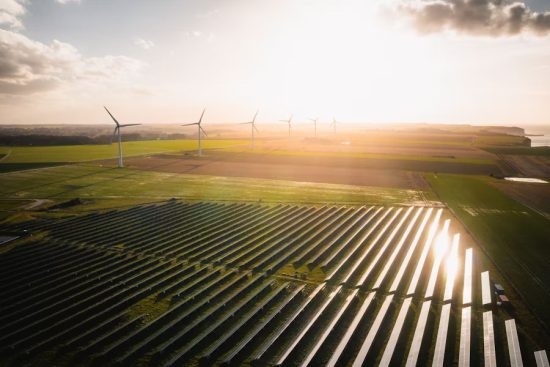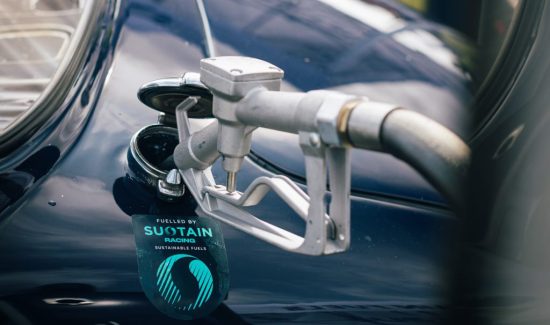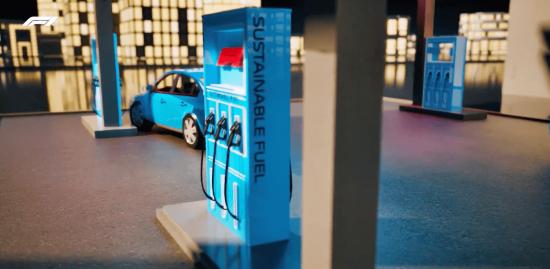Here at SUSTAIN, we believe that using a considered combination of fuel technologies is key to securing a cleaner future in transport.
Of course, this approach sounds like a no-brainer. From accessibility to affordability, there are many different requirements to cater for in transport, and there’s no silver bullet solution for all of these needs. However, in reality, the current strategy for transitioning from conventional vehicles to low-carbon vehicles is still very single-minded.
When it comes to exploring fossil fuel alternatives, electric vehicles (EVs) continue to dominate the discussions. But shouldn’t we support the implementation of the EV infrastructure with the plethora of other technologies available? Read on to find out more.
What technologies can we utilise to reduce the use of fossil fuels in passenger cars?
Before we explore the benefits of combining fuel technologies, let’s outline the core categories of alternative fuel solutions available for passenger cars.
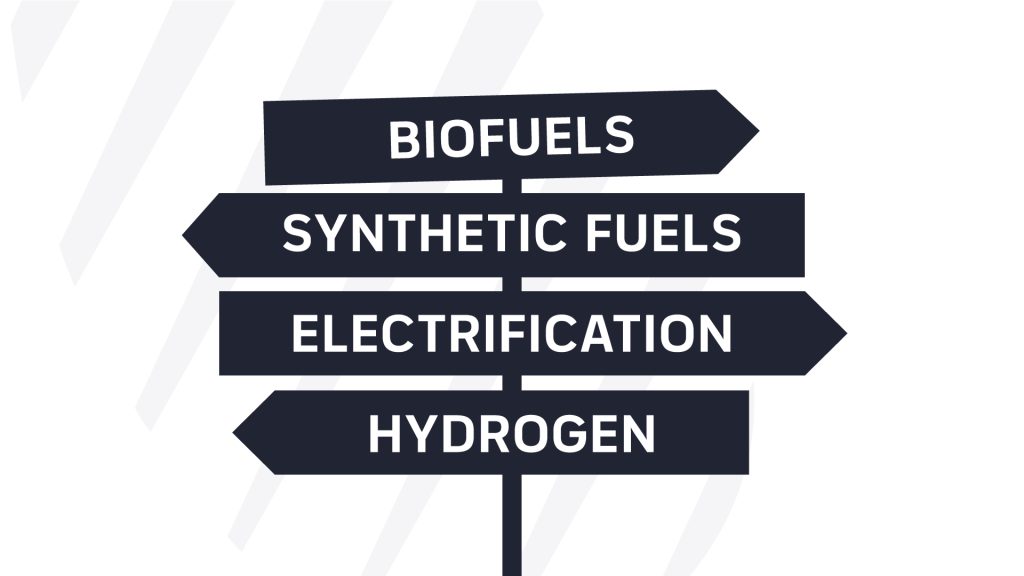
EVs powered by low CO2 electricity
EVs are vehicles powered entirely or partially by electric motors using energy stored in rechargeable batteries.
Pros:
- There are zero tailpipe emissions, which reduces air pollution and greenhouse gases at the point of use.
- Tax credits and rebates are available on EVs in many regions.
- They reduce noise pollution.
Cons:
- The charging infrastructure is insufficient in many areas.
- Batteries are expensive to replace and resource-intensive; they’re also emissions-intensive to produce.
- The transition to EVs will take time, meaning emissions from the current fleet are not addressed.
- It’s estimated that only 40 per cent of electricity consumed in the UK is currently renewablei.
Sustainable fuels
Sustainable fuels are energy sources that are less carbon-intensive than fossil fuels, while also being economically viable and socially acceptable to their end users. They are derived from sources that are not depleted over time and must comply with sustainability criteria around land use, water footprint, biodiversity, economics and more.
Pros:
- They are derived from biomass, waste, or other sustainable sources that can recycle the carbon already in our atmosphere
- They’re compatible with our current fleet and forecourts, meaning instant carbon reductions are achievable.
- They allow current vehicles to fulfil their lifespan in a more environmentally friendly way.
Cons:
- Currently, they are more expensive than fossil fuels due to a lack of demand and government support.
- Availability to the public is currently limited to key SUSTAIN retailers.
- Whilst they do recycle existing carbon, they don’t address air quality.

Renewable hydrogen
Hydrogen fuel cell vehicles (FCEVs) use hydrogen to generate electricity onboard. These are especially useful for heavy-duty applications like buses and trucks.
Pros:
- They produce only water as a byproduct, with zero tailpipe emissions.
- They can be generated from water using renewable energy (electrolysis).
- They provide a longer range than many battery-electric vehicles and fast refuelling.
Cons:
- Production, storage, and distribution of hydrogen remain expensive.
- There are limited hydrogen refuelling stations.
- Storage is a challenge; it requires high-pressure or cryogenic systems. Also, as hydrogen is highly flammable, it requires stringent handling protocols.
What are multi-fuel and hybrid fuel technologies?
Hybrid and multi-fuel systems combine the use of different fuel technologies within the same engine or vehicle, which can make the vehicle more efficient and flexible.
- Hybrid fuel technologies like plug-in hybrid electric vehicles (PHEVs) combine electric batteries with traditional fuel engines for extended range and flexibility. This means batteries installed in the car could be smaller, which also has benefits.
- Multi-fuel technologies refer to systems and innovations that enable engines to operate on two or more types of fuels. For example, Flexible-Fuel Vehicles (FFVs) are designed to run on multiple liquid fuels or a blend of fuels without significant modifications.
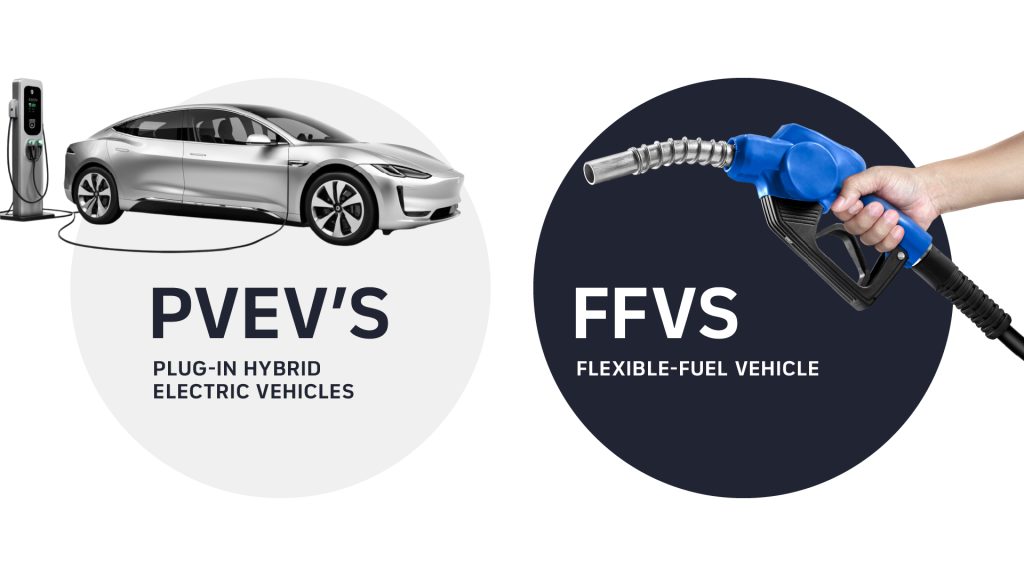
How can we benefit from combining fuel technologies?
There are many reasons to consider combining fuel technologies in the transition away from fossil fuel, some of which are explored below.
- Obtaining quicker results: Few deny that electric vehicles, running on renewable energy and produced in an environmentally and socially conscious way, offer many benefits, but electrification is not a quick solution. With issues around battery production and an entire infrastructure to replace, the implementation of EVs will take time to deliver. In the meantime, solutions such as sustainable fuels could be rolled out almost immediately, using our existing fleet and forecourts.
- Accelerating carbon savings: According to the Anaerobic Digestion and Bioresources Association (ADBA), 1 tonne of CO2 saved today is equivalent to having to save 30 tonnes in 2050. By utilising all of the fuel technologies together, we can increase the amount of CO2 we’re saving across the industry.
- Addressing the reality: Whilst legislation is pushing towards an electric future, ICE vehicles are going to be on our roads for many decades to come. In fact, our recent survey revealed that the average ICE car owner plans to run a petrol/diesel vehicle for another 9 years, whilst 20% of the public will keep theirs running as long as it is able and legal to do so. It makes sense to make those vehicles as environmentally friendly as possible and avoid unnecessary scrapping.
- Keeping core industries and expertise accessible: There are sectors, such as emergency services, where ICE engines may be required for many years to come. If we fail to maintain the supporting infrastructures or expertise needed to create, fix and fuel these vehicles, we’re in danger of losing this option.
- Diversifying our energy ecosystem: Combining EV infrastructure with hydrogen fuel cells and sustainable fuels creates a diversified energy ecosystem, reducing reliance on any single energy source, enhancing energy resilience, lowering greenhouse gas emissions, and supporting a broader range of transportation needs, from personal cars to heavy-duty vehicles.
- Maintaining social mobility: The price of EVs can prohibit some people from owning their own vehicles. By keeping more affordable ICE cars on the road, but using them with fuels that recycle existing carbon in our atmosphere rather than releasing new carbon from fossil fuel, we can maintain a more accessible mobility market.
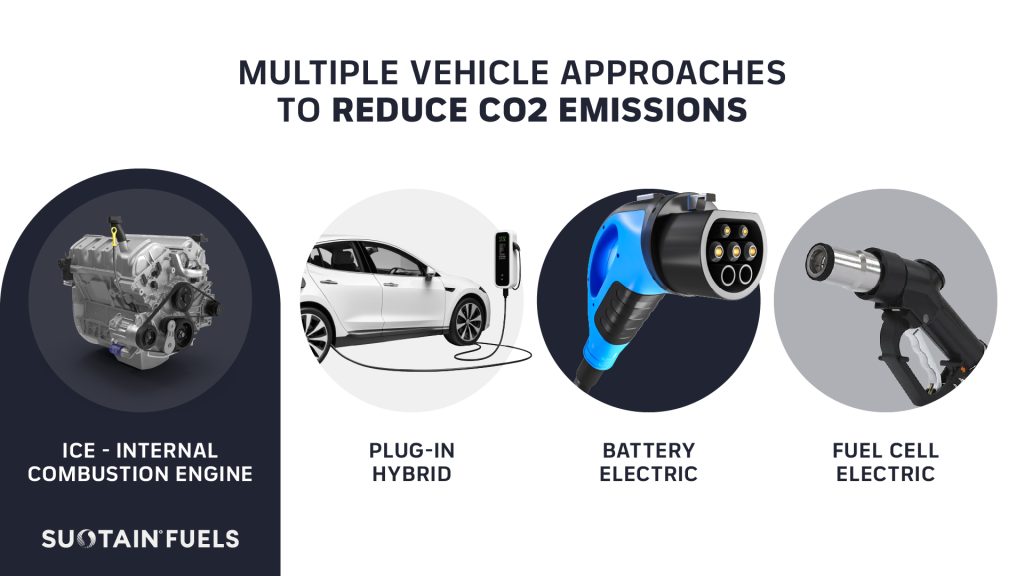
Why is the current approach focusing more on EVs?
One of the reasons that EVs have become a focus is that the current narratives and legislative frameworks in this area put the focus on tailpipe emissions. But if we want to look at the actual environmental impact, we really need to look at the bigger picture. A vehicle’s (and a fuel’s) life cycle runs from its production to its disposal, and the various stages involved in this cycle also include the creation of pollutants. If we want to weigh up what’s best for our planet properly, we need to explore the environmental impact of all these stages. This approach is called life-cycle assessment or LCA.
Secondly, there are fewer incentives for consumers to demand or use products such as sustainable fuels. Other technologies have been supported financially to make them credible solutions, and we know that other countries, such as Germany, are doing more to push sustainable fuels. However, with the right support here in the UK, and more certainty for the industry around the government’s plans, we could also drive change.
How can we secure a more combined approach and a cleaner future?
To secure a more holistic approach to transitioning away from fossil fuels, we must:
- Improve education and awareness: According to our survey, 54% of people would like to stop feeling forced down one path and hear about more alternative options. However, thousands are still unaware that technologies such as hydrogen and sustainable fuels already exist. Throughout our industry and beyond, we need to create more conversations around combined fuel approaches and the benefits this could offer.
- Invest and incentivise: Secondly, we need to start investing in ramping up the production and introduction of sustainable fuel components into mainstream fuels, which could start making a tangible difference far quicker than the proposed adoption of a single-solution approach. Incentives should also be offered to help with the integration of such fuels, as they are with other technologies.
- Adapt and embrace: We need to stop demonising ICE engines rather than the fossil fuel we use to power them. The vehicles we own, or buy in the run-up to 2035, will be on our roads for decades to come. So, by demonising the ICE, we’re neglecting more sustainable solutions that could be delivering progress on our net zero goals today.
In conclusion, if we’re looking to secure a cleaner future in transport, it’s key that we utilise all the fuel technology solutions for emissions we have available. As we’ve explored above, every fuel solution comes with its opportunities and challenges. It’s only when we combine their qualities that we can realise the true potential to make a difference for our planet.
Sources


